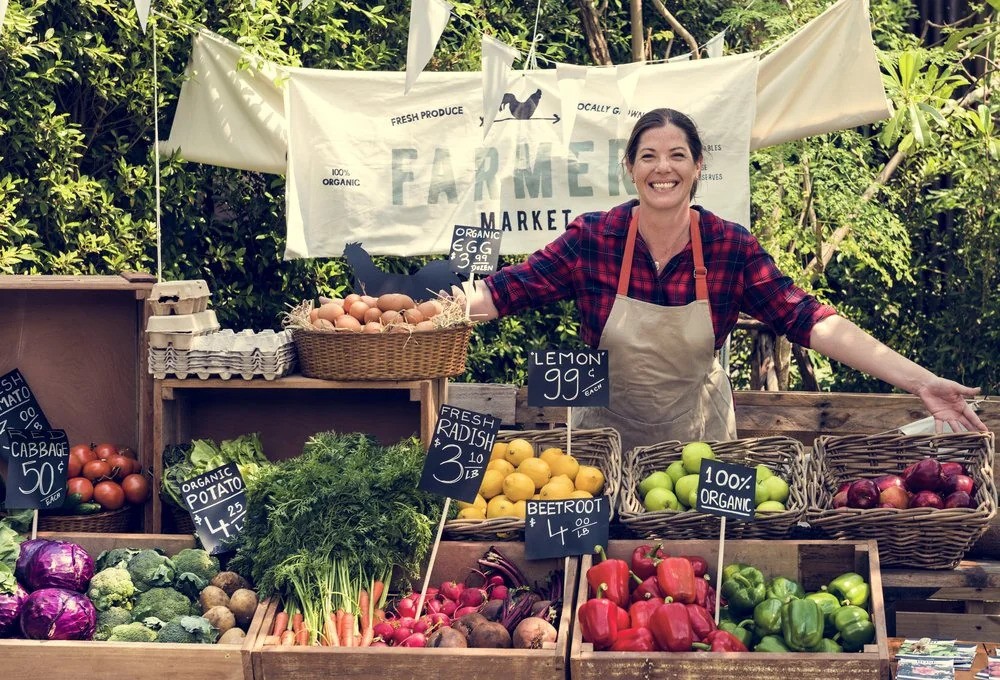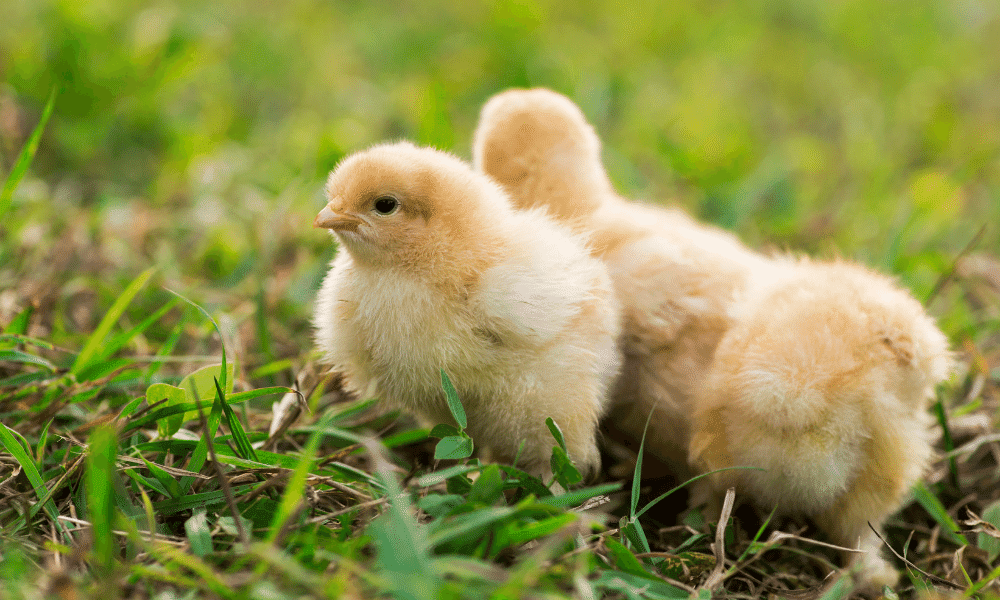Buff Orpington Chicken Breed Guide: The Wonderful World of Buff Orpington Chickens
The Buff Orpington chick stands out effortlessly amidst the adorable bunch of furballs in the brooder. With their undeniable cuteness and impeccable temperament, they have rightfully earned their spot as one of the most beloved breeds in the poultry world. The Buff Orpingtons captivate chicken enthusiasts and breeders alike with their stunning golden plumage and gentle nature. Not only are they visually striking, but they also possess a friendly and docile demeanor. This comprehensive guide will take you on a journey through the world of breeding Buff Orpingtons. We will delve into their desirable physical traits, explore their behavior, and provide you with useful tips for successful breeding. Whether you are a seasoned breeder or just starting out, this article promises to offer valuable insights into raising these delightful chickens.
The Allure of Buff Orpingtons
Buff Orpingtons, also known as Orpington chickens, are a breed that originated in England in the late 1800s. They were developed by William Cook, who aimed to create a dual-purpose chicken breed that excelled in both egg production and meat quality. Buff Orpingtons quickly gained popularity for their beautiful buff-colored feathers, which have a soft, golden hue. Their plump bodies, fluffy feathers, and gentle appearance make them a favorite among chicken enthusiasts and backyard farmers.
Physical Characteristics of Buff Orpingtons
Buff Orpingtons are known for their distinct physical features that contribute to their overall appeal. Here are some key characteristics that make a nice Orpington chicken:
Plumage
Buff Orpingtons have a dense and fluffy plumage that gives them a round and full-bodied appearance. Their feathers are soft and smooth, with a rich golden color that resembles the shade of a ripe buff-colored peach.
Body Shape
These chickens have a broad and deep body, with a well-rounded breast and a short, stout neck. Their body shape gives them a robust and sturdy appearance.
Size
Buff Orpingtons are considered a large breed, with hens weighing around 7-8 pounds and roosters weighing around 8-10 pounds. Their substantial size adds to their majestic presence in the flock.
Cushion
Buff Orpingtons have a unique feature called the "cushion," which refers to the fluffy feathers that cover the area between their legs and under their vent. This cushion adds to their overall plumpness and gives them a charming, teddy bear-like appearance.
Buff Orpington Eggs
Buff Orpington hens are good egg layers. They usually lay large, brown eggs and can be expected to lay about 3 to 5 eggs a week. They are also known to be good mothers, often successfully hatching and caring for their chicks.
The Behavior of Buff Orpingtons
In addition to their striking physical characteristics, Buff Orpingtons are known for their gentle and friendly behavior.
Marketplace
You might also be interested in...

Shop for chickens, livestock or other farm goods

About Farm Expo Events

Sell Your Chicks and Eggs
Docility
Buff Orpingtons have a calm and docile temperament, making them excellent choices for families with children or those seeking easy-to-handle chickens. They are known to be friendly and enjoy human interaction, often seeking attention and affection from their owners.
Broodiness
Buff Orpingtons have a strong maternal instinct and are known for their broody nature. They make excellent mothers, diligently sitting on their eggs and caring for their chicks. This broodiness can be advantageous for breeders looking to hatch their own chicks.
Foraging Skills
While Buff Orpingtons are not the most active foragers, they do enjoy scratching and pecking around the yard. They are content with free-ranging or having access to a spacious run where they can explore and find insects and vegetation to supplement their diet.
Tolerance to Cold Weather
Buff Orpingtons have a dense plumage that provides excellent insulation, making them well-suited for colder climates. They can withstand chilly temperatures better than some other chicken breeds, which is an advantage for breeders in regions with harsh winters.
The Joy and Art of Breeding Buff Orpington Chickens
Breeding Buff Orpingtons offers an enriching journey, blending the beauty and serene nature of these birds with the satisfaction of contributing to the breed’s legacy. Whether your aim is to showcase these golden beauties in competitions, enhance their genetic lineage, or simply immerse yourself in the pleasure of nurturing them, the following guidelines will contribute to a fruitful breeding endeavor.
Selecting Breeding Stock
Criteria for Selection: The first step in breeding Buff Orpingtons is selecting the right breeding stock. Focus on individuals that showcase the breed's hallmark characteristics: a robust body shape, luminous buff-colored plumage, and a vibrant, healthy disposition. Adherence to breed standards is crucial, not just for aesthetics but for promoting the health and well-being of the lineage. Additionally, the quintessential gentle and affable nature of Buff Orpingtons should be a key trait in your selection, as temperament is as inheritable as physical traits.
Health and Vitality: Prioritize birds that are the epitome of health—those free from any signs of illness, with a history of robustness, as these traits will be passed down to future generations.
Creating Breeding Pairs
Pairing Strategy: Matchmaking in Buff Orpington breeding involves more than just pairing a Buff Orpington hen with a Buff Orpington rooster. The ideal pair should be a careful selection in which each bird’s physical and genetic attributes complement the other, aiming for a pairing that will enhance the breed’s qualities in their offspring.
Genetic Diversity: It's essential to avoid inbreeding by ensuring that the birds are not too closely related. This practice helps maintain the breed’s vigor, reducing the likelihood of inherited health issues and promoting a diverse genetic pool for resilience and overall health.
Incubation and Hatching
Incubation Choices: While Buff Orpington hens tend to be excellent mothers thanks to their broody nature, you might opt for artificial incubation for greater control over the hatching process. Ensure you use a reliable incubator, setting it to the optimal temperature and humidity levels recommended for your Buff Orpington eggs.
Egg Monitoring: Vigilance during the incubation period is key. Regularly turn the eggs and monitor the incubator’s conditions to ensure the developing embryos have the best chance of thriving.
Caring for Buff Orpington Chicks
Brooder Setup: Post-hatch, your Buff Orpington chicks will require a secure and warm brooder space. The brooder should mimic the warmth and protection a hen would provide, with adequate heat, access to fresh water, and high-quality chick feed to support their growth.
Health and Growth Monitoring: Keeping a close eye on the chicks’ health and development during these initial stages is critical. Watch for any signs of distress or illness and be prepared to intervene with appropriate care or medical treatment as needed.
Choosing Your Buff Orpington Chick: Finding the Perfect Feathered Friend
Embarking on the journey to select a Buff Orpington chick is an exciting adventure. These chicks, known for their gentle disposition and striking golden plumage, make wonderful additions to any flock. Here's how to ensure you pick the best one, keeping an eye out for signs of health, vitality, and the breed's renowned friendly nature.
Selection Criteria to Consider
Health and Vitality: The foundation of a great choice. Look for a chick that is:
Active and alert
Boasts bright, curious eyes
Sports clean, mite- and lice-free feathers
Physical Build: Key indicators of a well-bred Buff Orpington include:
A well-rounded body with a broad breast
A stout neck supporting a curious little head
A straight and sturdy stance suggesting a robust skeletal structure
Plumage Perfection: The hallmark of the Buff Orpington's beauty is in its feathers. Seek out Buff Orpington chicks that offer:
Soft, fluffy feathers, uniform in the signature buff color
Consistent coloration, avoiding any that display pale or uneven hues which could indicate underlying issues
Behavioral Traits: True to their reputation, the best Buff Orpington chicks should display:
Calm and sociable tendencies, hinting at their future as friendly and docile adults
The Enchanting Golden Hue of the Buff Orpington Chicken
Discover the magic behind the Buff Orpington Chicken's captivating buff color—a testament to the ingenious selective breeding efforts by William Cook in the late 1800s. Cook's vision brought together several breeds, including the Black Orpington, Minorca, and Langshan, aiming to craft a chicken breed not only beautiful in appearance but also excellent in utility and temperament.
Key Highlights
Origins: The buff color emerged from Cook's breeding program, which initially focused on the Black Orpington. His goal? To introduce a visually stunning color variation.
Color Science: Achieving the buff color is a dance of genetics and pigmentation. The dilution of the black pigment, melanin, leads to the golden buff hue.
Genetic Mechanics: At the heart of the buff color is the Extension (E) gene, particularly the e allele. Chickens with the ee genotype flaunt the golden buff shade. Yet, it's a team effort—other genes and modifiers also pitch in, affecting the intensity and hue.
Breeder's Art: Selective breeding is paramount. Breeders meticulously choose chickens with the desired color traits, ensuring the lineage preserves the enchanting buff color while sidelining any undesirable variations.
The Art and Science Behind the Buff Hue
Pigment Play: Melanins dictate the palette of chicken plumage, with the buff color resulting from a lighter expression of black and brown pigments.
Genetic Symphony: Multiple genes collaborate to produce the buff color. The e allele plays a leading role by reducing black pigment production, but it doesn't act alone. Other genetic actors influence the final shade and intensity.
Breeding Mastery: Achieving and maintaining the perfect buff color requires a keen eye for genetics, observant selection, and strategic breeding practices. Breeders aim for consistency and quality in the buff-colored plumage.
Buff Orpington's Legacy of Beauty and Utility
The Buff Orpington chicken's golden plumage stands as a symbol of selective breeding's power to enhance both beauty and functionality in poultry. It celebrates William Cook's enduring legacy and the ongoing dedication of breeders to refine and preserve this stunning coloration. Today, the Buff Orpington continues to charm enthusiasts worldwide with its warm, golden presence—a true feathered jewel in the world of poultry.
Conclusion
Breeding Buff Orpington Chickens is a delightful endeavor that allows you to appreciate the beauty and gentle nature of these remarkable chickens. Their stunning physical characteristics, including their fluffy golden plumage and plump bodies, make them a favorite among chicken enthusiasts. Their docile behavior and broody nature further add to their appeal. By following the tips and guidelines outlined in this guide, you can embark on a successful breeding journey and enjoy the company of these charming birds in your flock. Whether you are a seasoned breeder or a beginner, raising Buff Orpingtons is sure to bring joy and satisfaction to your poultry-keeping experience.
Buff Orpington FAQ
-
Buff Orpington hens are known for laying generously sized, rich brown eggs. These eggs not only look charming in any egg basket but are also a testament to the hen's excellent laying abilities.
-
These golden beauties usually embark on their egg-laying journey around the tender age of 6 to 8 months. However, this can vary with each hen, as factors such as nutrition, overall health, and the care they receive play pivotal roles in kick-starting their laying cycle.
-
With proper care, Buff Orpingtons can typically live 8 to 12 years, though this range can vary widely with individual health and environmental conditions.
-
Buff Orpingtons possess a remarkable maternal instinct, often displaying a strong broody behavior. They excel as mothers, carefully tending to their eggs and providing tender care to their chicks, making them invaluable assets to any breeding program.
-
Buff Orpingtons are considered good layers, producing about 3 to 5 eggs per week. Their consistent egg production makes them a favorite among backyard farmers and poultry enthusiasts alike.
-
Generally speaking, Buff Orpington roosters tend to be more gentlemanly and show less aggression than roosters of other breeds. However, just like people, each rooster has a unique personality, and variations can occur.
-
Buff Orpington hens weigh about 7-8 pounds, while roosters can weigh 8-10 pounds, making them a large breed.
-
Buff Orpingtons dense plumage provides excellent insulation against the cold, making them well-suited for cooler climates.
-
Buff Orpingtons are renowned for their friendly and docile temperament, making them great pets!
-
Buff Orpington chicks are fluffy and yellow, with a soft, downy appearance that hints at their future golden plumage.
If you’re looking for Buff Orpington chickens, Roobeez can help. Roobeez is the first-of-its-kind online farmer’s market designed specifically for poultry lovers. Roobeez is a unique online platform tailored for poultry enthusiasts like you. Membership is free and offers unlimited access to the marketplace, informative guides, a supportive community, and additional benefits.
You might also be interested in…




















Discover farmers markets near you with Roobeez! Explore local events, find seasonal and weekly markets, and shop fresh produce and handmade goods on our marketplace. Contribute to our growing directory by adding your favorite markets and community events. Supporting local has never been easier!